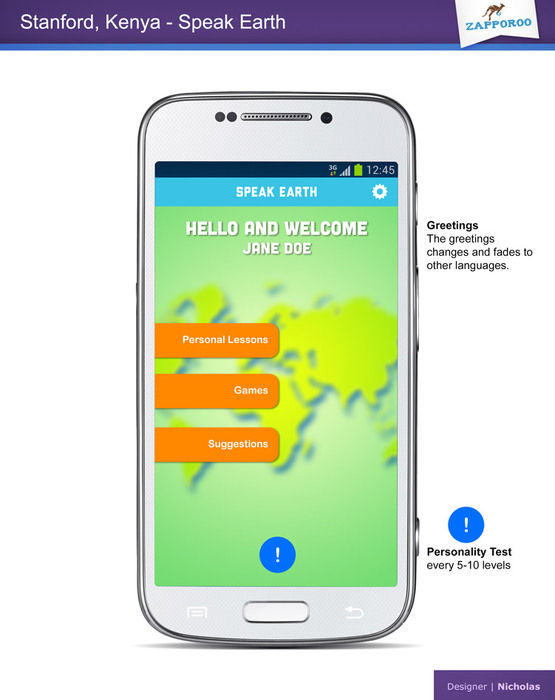ISU student designs personalized app to benefit language learners
Kenya Stanford, sophomore in world languages and cultures, came up with a new app that personalizes studying languages and has a chat function. It’s currently in development.
September 8, 2014
Kenya Stanford was disappointed with the language learning apps she was using, so she decided to create her own.
Stanford, a sophomore in world languages and cultures, created the app “Speak Earth” because she wanted a more interactive and personalized alternative learning experience.
“I didn’t really like most of the apps, so I stopped using them,” Stanford said. “I knew I should be using them because they were helping. They just weren’t something that was keeping me interested in it.”
“Speak Earth” is different because the app will allow users to personalize their own lesson plans, Stanford said.
Users can set either pre-made or individually-made goals, write a daily journal entry and personalize lesson plans. The app will ask the user to input their likes and dislikes in learning techniques.
“That way, what you’re learning is specific to you and relevant to your life today,” Stanford said. “It’ll hopefully keep you interested.”
A chat function allows users to practice with native speakers or other people using the app to learn.
Another section suggests learning activities outside the app, such as movies, magazines, books and television shows. The app will take into consideration the user’s language level to suggest activities.
Stanford created the idea and lesson plans of the app, but the application design company Zapporoo will take care of the technical side. Zapparoo will follow Stanford’s guidelines to create the app.
“I just wanted to use it. I didn’t care about making money off of it or anything,” Stanford said. “They give me complete control. They show me what they have done and I can tweak it how I want.”
Edel Aron, an open option junior, took four years of German in high school. She is not taking any language courses in college, but she said she would use an app as a way to upkeep her skills.
“An app would be beneficial,” Aron said.
Stanford asked a few of her German professors for feedback on the application’s lesson plans. Mark Rectanus, German professor in world languages and cultures, said the app could serve as an additional resource for learning a language.
“The more exposure you can have to a language [and] the more you interact with it, the better,” Rectanus said. “Do as much as you can and you’ll learn more of the language.”
Every student has a different learning style, Rectanus said. Some have more trouble speaking and writing while others have difficulty in listening and reading.
Rectanus said apps that aren’t designed specifically to teach another language can also be beneficial. Some apps that provide directions, for example, can be set to a different language for people to learn vocabulary and every day phrases.
Though an app can be helpful, Rectanus said that shouldn’t be the only method used to learn a language.
“You’ve got to use other resources,” Rectanus said. “There’s certainly a lot of advantages in technology that can assist you in learning, but it’s not a substitute for interacting with people.”
Zapporoo uses a three-step process to launching an app. Stanford is still in the development stage of the app. She started on the app this summer and is now fundraising for the second phase. The third phase includes making a prototype and then building the app. She isn’t sure when the app will be on the market but hopes to be ready to go in December 2014 or January 2015.
The first version of the app will be free, but she said the second app may cost about $1.99.
She hopes the app will benefit other language learners.
“I would like to see a lot of people really trying to broaden their languages and try to connect with other people,” Stanford said. “The biggest thing that made me want to make the app was that I, as a language student, would want to use it.”

















